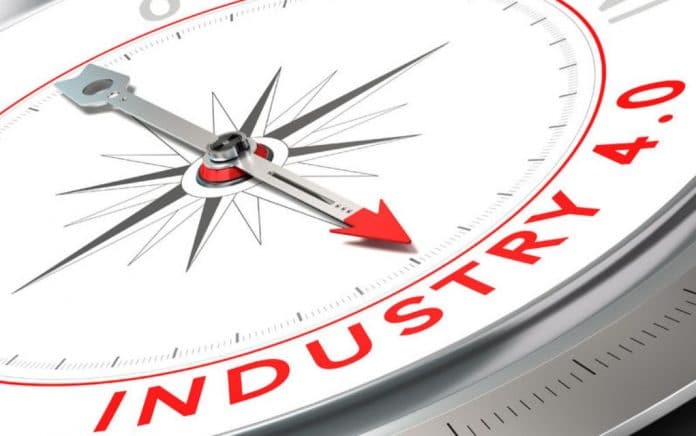By Trevor Hoyle, Senior Vice President Operations, Northern Europe, FedEx Express
Jaguar Land Rover is the UK’s largest car manufacturer.[1] In addition to producing over 500,000 cars each year, the company is also at the cutting edge of 3D printing – using the innovative technology to print 55,000 parts ranging from bodywork to switchgear annually with significant time and cost savings.[2]
This is a great example of the revolution that is sweeping the world of manufacturing. Not since the ‘lean revolution’ of the 1970s, often dubbed the ‘third industrial revolution’, have such radical changes been made to the way production is designed, monitored and executed, and the repercussions of this sea-change are being felt all the way down the value chain right into the hands of the end-customer. Today’s always-on, e-commerce-driven global economy is creating a brave new world known as the fourth industrial revolution, or ‘Industry 4.0’ – and businesses need to rapidly adapt to avoid being left behind.
Industry 4.0 is shorthand for applying new, digitally-driven capabilities to manufacturing and at each subsequent stage in the value chain. At its simplest, it can mean applying technology to a single stage in the chain – a gold mine in Africa leveraged big data from its sensors to discover an irregularity at a particular point in its production process, for example. Fixing this irregularity increased yield by 3.7 percent – or £15.6m – each year[3].
However, to realise the full potential of Industry 4.0, companies are looking more holistically at their value chains. With four decades of experience in supporting customers’ supply chains, our business is uniquely positioned to observe how these changes are impacting supply chains everywhere. I believe that a rethink of supply chain management is needed if manufacturers and retailers are to successfully harness the possibilities of Industry 4.0.
Making supply chains customer-centric
Once viewed purely in terms of its potential to yield cost efficiencies, supply chain management has evolved. Thanks to big data analytics and changing customer expectations, demand forecasting is more sophisticated. This means that modern supply chains now have a vital additional role in ensuring customer satisfaction and retention.
To achieve this goal, logistics now needs to work across the company from the front-end to the back-end, seamlessly integrating production, inventory, marketing, sales, payments, distribution and product returns[4] to optimise the supply chain model that balances cost efficiencies with keeping customers happy.
Embracing innovation
Achieving this degree of integration is complex – in a recent research study, only 7% of business executives believed they had created fully-integrated businesses[5] that could be regarded as Industry 4.0-ready. Access to the right technology is only one part of the puzzle; businesses also need a culture that embraces innovation and a workforce – from C-suites to general staff – that is willing to innovate to drive change[6].
However, when weighing these barriers to implementing an Industry 4.0-ready supply chain against the potential benefits, an almost unassailable business case emerges in favour of making the leap for businesses large and small. Consider the aircraft maker Airbus. The company has invested significantly in creating a “Factory of the Future” by building aircraft in virtual reality, with production lines that include computer-suited personnel and robots working side by side[7]. As a result of these changes, which the company dubs ‘smart production’, Airbus is able to keep pace with increased demand, and also now manufactures its products in a more sustainable way[8].
The benefits of Industry 4.0 are certainly not confined to large multinational corporations. China-based furniture retailer Markor realised that it could innovate its supply chain to identify trends in customer purchasing behaviour. The company created a smartphone app that uses big data to identify these trends, then makes personalised recommendations to customers on product designs. Using mobile devices, sales staff can show products demos and 3D images of custom furniture. When sales are made, customer preferences and purchase details are saved automatically, and the company uses the information to drive future business[9].
The next frontier for competition
Of course, these are just some examples of technology overhauling the supply chain. Touch-screens, robotics and augmented reality[10] can all be orchestrated to achieve value-creating supply chains capable of responding automatically to changes in end-demand[11]. The central question is not what technology is harnessed, but whether you work with the right manufacturing, technology or logistics providers to enable your supply chain to be truly integrated and demand-driven.
Get it right, and you’ll be on the way to achieving efficiencies, reduced time-to-market, cost savings, improved productivity and revenue gains. Despite the substantial investment involved, more than half of the respondents in a recent Industry 4.0 global survey anticipated return on investment in just two years[12].
In a world where business is increasingly transacted digitally, preparing your supply chain for Industry 4.0 represents the next frontier in the battle for competitive edge.
[1] Jaguar Land Rover – Corporate Website (accessed April 2017)
[2] Car Magazine, July 2016
[3] “Manufacturing’s next act”, Baur and Wee, McKinsey & Company, June 2015
[4] “Top of Mind Survey 2016: Becoming Hyper Customer Centric”, KPMG, June 2016
[5] “Top of Mind Survey 2016: Becoming Hyper Customer Centric”, KPMG, June 2016
[6] “Top of Mind Survey 2016: Becoming Hyper Customer Centric”, KPMG, June 2016
[7] “Five Industries that will be Completely Transformed by IoT”, Hewlett Packard Enterprise
[8] “Factory of the Future”, Airbus, accessed on 28 February 2017
[9] China’s Premier Furniture Retailer Transforms Customer Experience with Analytic-based IBM MobileFirst for iOS Retail App, IBM, August 2015
[10] “Manufacturing’s next act”, Baur and Wee, McKinsey & Company, June 2015
[11] “Industry 4.0: What about lean?”, Netland, T, March 2015
[12] “A Strategist’s Guide to Industry 4.0”, strategy+business, May 2016

